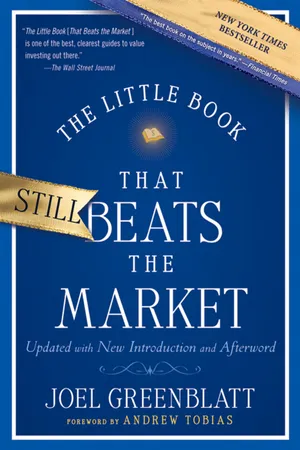![]()
Chapter One
JASON’S IN THE SIXTH GRADE, and he’s making a fortune. My son and I see him almost every day on the way to school. There’s Jason in the back of his chauffeur-driven limousine, all decked out in cool clothes and dark sunglasses. Ahhh, to be 11 years old, rich, and cool. Now that’s the life. Okay, maybe I’m getting a little carried away. I mean, it’s not really a limousine; it’s kind of a scooter. And the cool clothes and sunglasses part, well, that’s not really true, either. It’s more like his belly hanging over a pair of jeans, no sunglasses, and what he had for breakfast still stuck to his face. But that’s not my point. Jason’s in business.
It’s a simple business, but it works. Jason buys gum, four or five packs a day. It’s 25 cents for a pack and five sticks of gum to a package. According to my son, once in school, Jason transforms himself into a superhero of sorts. Neither rain nor sleet nor evil hall monitors can keep Jason from selling his gum. I guess his customers like buying from a superhero (or maybe they’re just stuck in school), but however he does it, Jason sells each stick of gum for 25 cents. (Supposedly—I’ve never actually seen it myself—Jason kind of shoves an open pack of gum into a potential customer’s face and repeats “You want some, you know you want some!” until his fellow student either collapses or forks over a quarter.)
The way my son has it figured, that’s five sticks at 25 cents each, so Jason rakes in $1.25 for each pack he sells. At a cost of 25 cents per pack, that means Jason is making $1 of pure profit on every pack he can shove . . . I mean, sell. At four or five packs a day, that’s a lot of money! So after one of our daily Jason sightings, I asked my sixth-grader, “Gee, how much do you think this guy Jason can make by the end of high school?” My son—we’ll call him Ben (even though his real name is Matt)—started whizzing through the calculations using all his brainpower (and a few fingers). “Let’s see,” he replied. “That’s, say, four bucks a day, times five days a week. So, $20 a week, 36 weeks of school, that’s $720 a year. If he has six years left until he graduates, that’s somewhere over $4,000 more he’ll make by the end of high school!”
Not wanting to miss an opportunity to teach, I asked, “Ben, if Jason offered to sell you half of his business, how much would you pay? In other words, he’ll share half his profits from the gum business with you over the six years until he graduates, but he wants you to give him money now. How much would you give him?”
“Well . . .”—I could see Ben’s wheels start to turn now that there might be some real money on the line—“maybe Jason doesn’t sell four or five packs a day, but three packs—that’s a pretty safe bet. So maybe he makes three bucks a day. That’s still $15 in a five-day school week. So, 36 weeks in a school year, that’s 36 times 15 (I might have helped a little in here), that’s over $500 a year. Jason has six more years of school, so 6 times $500 is $3,000 by the time he graduates!”
“Okay,” I said, “so I guess you’d pay Jason $1,500 for half of those profits, right?”
“No way,” Ben answered quickly. “First, why should I pay $1,500 to get back $1,500? That doesn’t make any sense. Besides, the $1,500 I get from Jason will take six years to collect. Why would I give him $1,500 now to get back $1,500 over six years? Also, maybe Jason does a little better than I figure and I get more than $1,500, but he could do worse, too!”
“Yeah,” I chimed in, “maybe other kids start to sell gum in school, and Jason has so much competition he can’t sell as much.”
“Nah, Jason’s practically a superhero,” Ben says. “I don’t think anyone can sell as well as Jason, so I’m not too worried about that.”
“So I see your point,” I responded. “Jason’s got a good business, but $1,500 is too much to pay for half. But what if Jason offered you half his business for $ 1 ? Would you buy it then?”
“Of course,” Ben shot back with a “Dad, you’re being an idiot” kind of tone.
“So, fine,” I said, ignoring the tone for a moment. “The right price is somewhere between $1 and $1,500. Now we’re getting closer, but how much would you pay?”
“Four hundred fifty bucks. That’s how much I’d pay today. If I collected $1,500 over the next six years, I think that would be a good deal,” Ben said, evidently pleased with his decision.
“Great!” I responded. “Now you finally understand what I do for a living.”
“Dad, what the heck are you talking about? Now I’m totally lost. I’ve never seen any gum!”
“No, Ben, I don’t sell gum. I spend my time figuring out what businesses are worth, just like we did with Jason’s business. If I can buy a business for a lot less than I think it’s worth, I buy it!”
“Wait a second,” blurted out Ben. “That sounds too easy. If a business is worth $1,000, why would anyone sell it to you for $500?”
Well, as it turned out, Ben’s seemingly reasonable and obvious question was actually the magic question that got this whole project started. I told Ben that he had just asked a great question, that believe it or not, there is a place where they sell businesses at half price all the time. I told him that I could teach him where to look and how to buy those bargains for himself. But, of course, I told him there was a catch.
The catch isn’t that the answer is incredibly complicated. It’s not. The catch isn’t that you have to be some kind of genius or superspy to find $1,000 bills selling for $500. You don’t. In fact, I decided to write this book so that Ben and his siblings could not only understand what I do for a living but also learn how to start finding these bargain investments for themselves. I figure whatever career they choose in the future (even if it’s not money management, a career I’m not necessarily encouraging), they’ll definitely need to learn how to invest some of their earnings.
But, like I told Ben, there is a catch. The catch is that you have to listen to a long story, you have to take the time to understand the story, and most important, you have to actually believe that the story is true. In fact, the story even concludes with a magic formula that can make you rich over time. I kid you not. Unfortunately, if you don’t believe the magic formula will make you rich, it won’t. On the other hand, if you believe the story I’m going to tell you—I mean really, truly believe—then you can choose to make money with or without the formula. (The formula will take significantly less time and effort than doing the “work” yourself, and will provide better results for most people, but you can decide which way to go when you’re done reading.)
Okay, I know what you’re thinking. What’s this belief stuff about? Are we talking about a new religion, maybe something to do with Peter Pan or The Wizard of Oz? (I won’t even bring up the witch-inside-the-crystal-ball thing that still scares the heck out of me, or the flying monkeys, mainly because neither has anything to do with my story.) And what about the getting rich part, what’s that? Can a book really teach you how to get rich? That doesn’t make sense. If it could, everyone would be rich. That’s especially true for a book that claims to have a magic formula. If everyone knows the magic formula and everyone can’t be rich, pretty soon the formula will have to stop working.
But I told you this was a long story. I’m going to start from the very beginning. For my kids and most others, almost all of this stuff will be new. For adults, even if they think they know a lot about investing already, even if they’ve been to graduate business school, and even if they manage other people’s money professionally, most have learned wrong. And they’ve learned wrong from the beginning. Very few people really believe the story I’m going to tell. I know this because if they did—if they really, truly did—there would be a lot more successful investors out there. There aren’t. I believe I can teach you (and each of my children) to be one of them. So let’s get started.
![]()
Chapter Two
ACTUALLY, JUST GETTING STARTED is a big deal. It takes a great amount of discipline to save any money. After all, no matter how much money you earn or receive from others, it’s simply much easier and more immediately rewarding to find something to spend it on. When I was young, I decided that all my money should go to Johnson Smith. Of course, I’d love to tell you that Johnson Smith was an orphan who just needed a little help. I’d love to tell you that the money given to Johnson Smith helped change his life. I’d love to tell you that, but it wouldn’t be completely accurate. You see, Johnson Smith was a company. Not just any company, either. It was a company that sold whoopee cushions, itching powder, and imitation dog vomit through the mail.
I mean, I didn’t completely throw away all my money. I did buy some educational stuff, too. Once, the guys at Johnson Smith were able to sell me a weather balloon that was 10 feet tall and 30 feet around. I’m not sure what a giant balloon had to do with the weather, but it sounded educational, sort of. Anyway, after my brother and I finally figured out how to blow it up by somehow reversing the airflow on the vacuum cleaner, we ran into a big problem. The 10-foot balloon was quite a bit larger than our front door. Using a complicated formula that not even Einstein could fully comprehend, we decided that if we turned our backs and pushed really hard, the giant balloon could be squeezed out without bursting the balloon or damaging the door (and besides, our mother wasn’t home yet). And it worked, except we forgot one thing.
It seems that the air outside was colder than the air inside our house. That meant that we had filled our balloon with warm air. And since, as everyone except apparently me and my brother knew, hot air rises, the balloon started to float away. The two of us were left chasing a giant balloon down the street for about half a mile before it finally popped on a tree.
Luckily, I learned a valuable lesson from the whole experience. Although I don’t exactly remember what that was, I’m pretty sure it had something to do with the importance of saving money for things that you might want or need in the future rather than wasting money buying giant weather balloons that you get to chase down the block for all of three or four minutes.
But for our purposes, let’s assume that we can all agree that it is important to save money for the future. Let’s also assume that you have been able to resist the many temptations of the Johnson Smith people and the thousands of other places calling out for your money; that you (or your parents) have been able to provide for all of the necessities of life, including food, clothing, and shelter; and that by being careful about how much you spend, you have somehow been able to put aside at least a small amount of money. Your challenge is to put that money—let’s say $1,000—someplace where it can grow to be even more money.
Sounds simple enough. Sure, you can just put it under your mattress or in your piggy bank, but when you come to get it, even years later, you’ll still be left with the same $1,000 you put there in the first place. It won’t grow at all. In fact, if the prices of the things you were going to buy with that money go up during the time your money was just sitting there (and therefore your $1,000 will buy less stuff than it used to), your money will actually be worth less than it was worth the day you put it away. In short, the mattress plan kind of stinks.
Plan B has got to be better. And it is. Just take that $1,000 over to the bank. Not only will the bank agree to hold your money, they’ll pay you for the privilege. Each year, you’ll collect interest from the bank, and in most cases, the longer you agree to let them hold your money, the higher the interest rate you’ll get. If you agree to keep your $1,000 with the bank for five years, you might collect something like 5 percent in interest payments per year. So the first year you collect $50 in interest on your $1,000 original deposit, and now you will have $1,050 in the bank at the beginning of year 2. In year 2, you collect another 5 percent interest on the new, higher total of $1,050, or $52.50 in interest, and so on through year 5. After five years, your $1,000 will grow into $1,276. Not bad, and certainly a lot better than the mattress plan.
Which brings us to Plan C. This plan is known as “who needs the bank?” There’s an easy way to just skip the bank altogether and lend to businesses or to a group of individuals yourself. Often businesses borrow money directly by selling bonds. The corner bakery won’t usually sell these, but larger (multimillion-dollar) companies, such as McDonald’s, do it all the time. If you purchase a $1,000 bond from a large company, for example, that company might agree to pay you 8 percent each year and pay back your original $1,000 after 10 years. That clearly beats the crummy 5 percent the bank was willing to pay you.
There’s one little problem, though: If you buy a bond from one of these companies and something goes wrong with its business, you may never get your interest or your money back. That’s why riskier companies—say, Bob’s House of Flapjacks and Pickles—usually have to pay higher interest rates than more solid, established ones. That’s why a company’s bonds have to pay more than the bank. People need to make more money on their bond to make up for the risk that they may not receive the promised interest rate or their original money back.
Of course, if you’re not comfortable taking any risk of losing your $1,000, the U.S. government sells bonds, too. While there is nothing completely riskless in this world, lending money to the U.S. government is the closest any of us will ever get. If you are willing to lend the U.S. government your money for 10 years, the government might, for example, agree to pay you something like 6 percent per year (if you lend for shorter periods of time—say, five years—the rate will usually be ...




